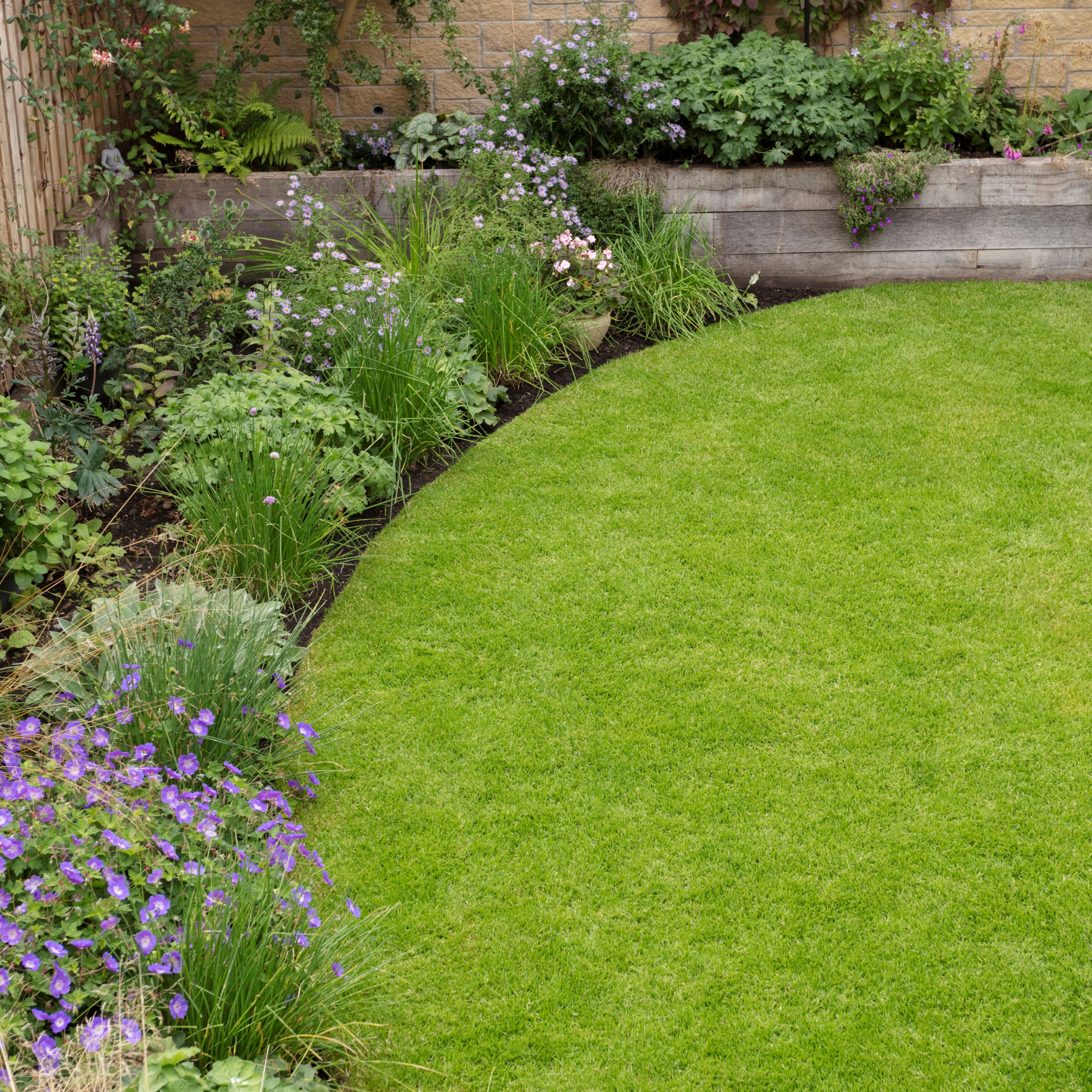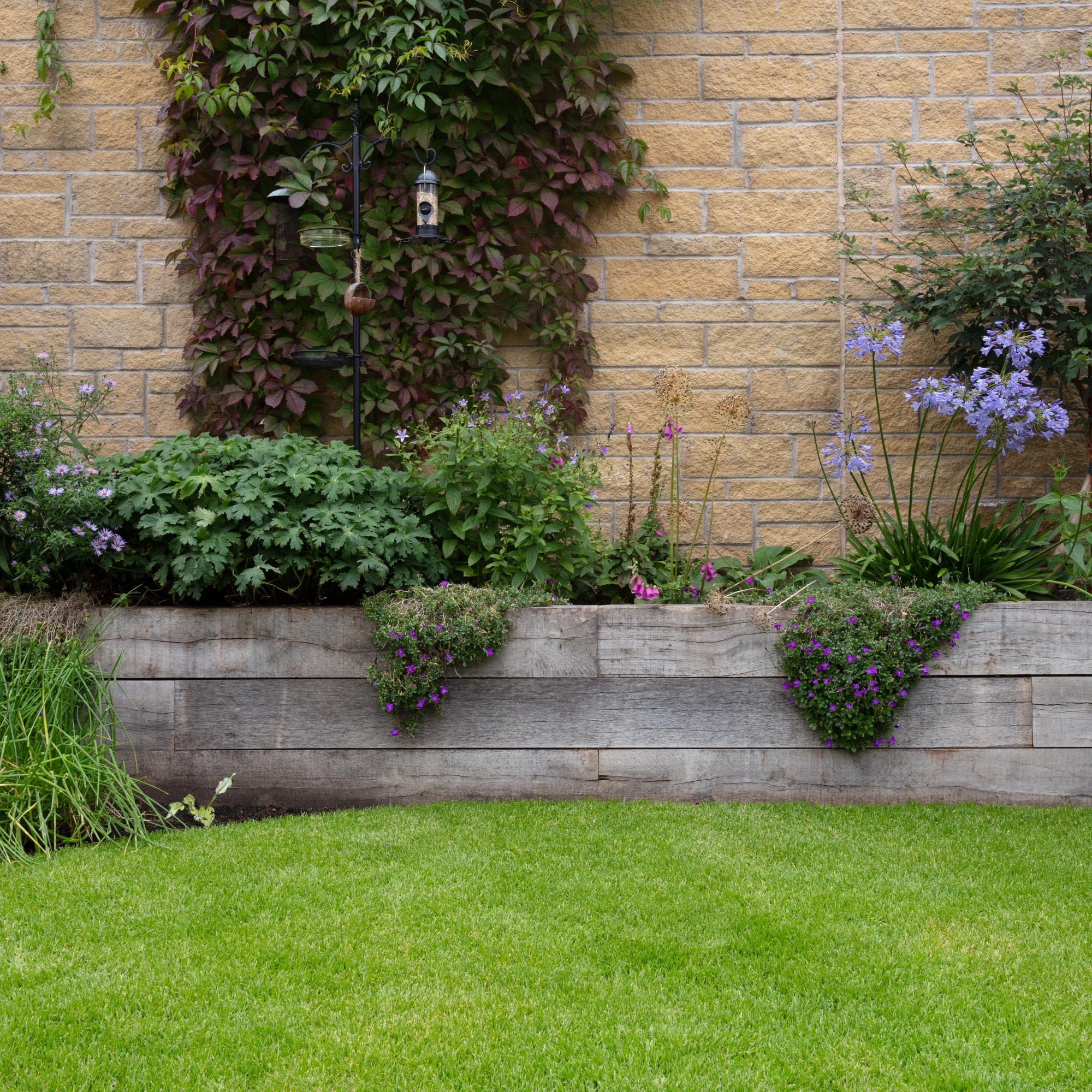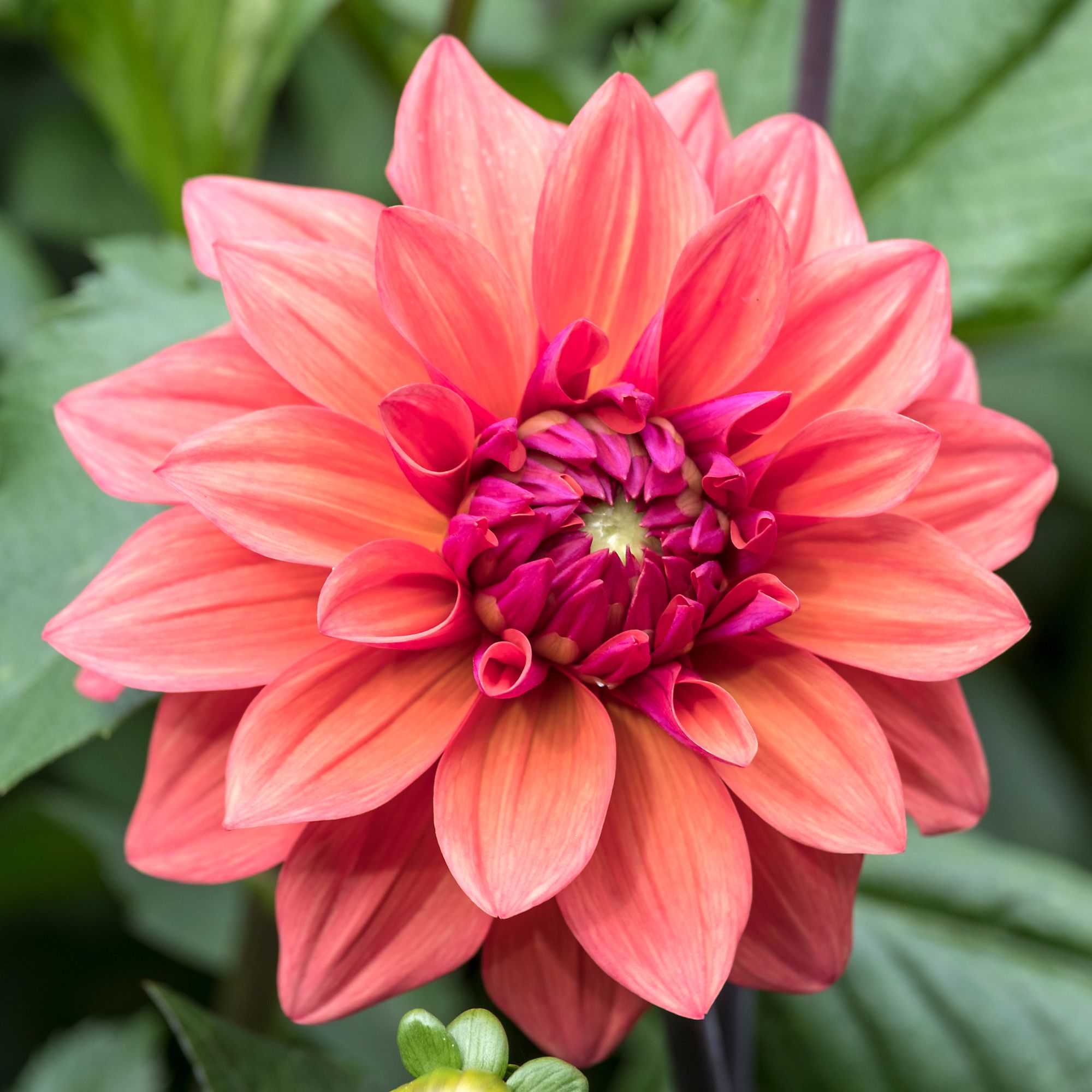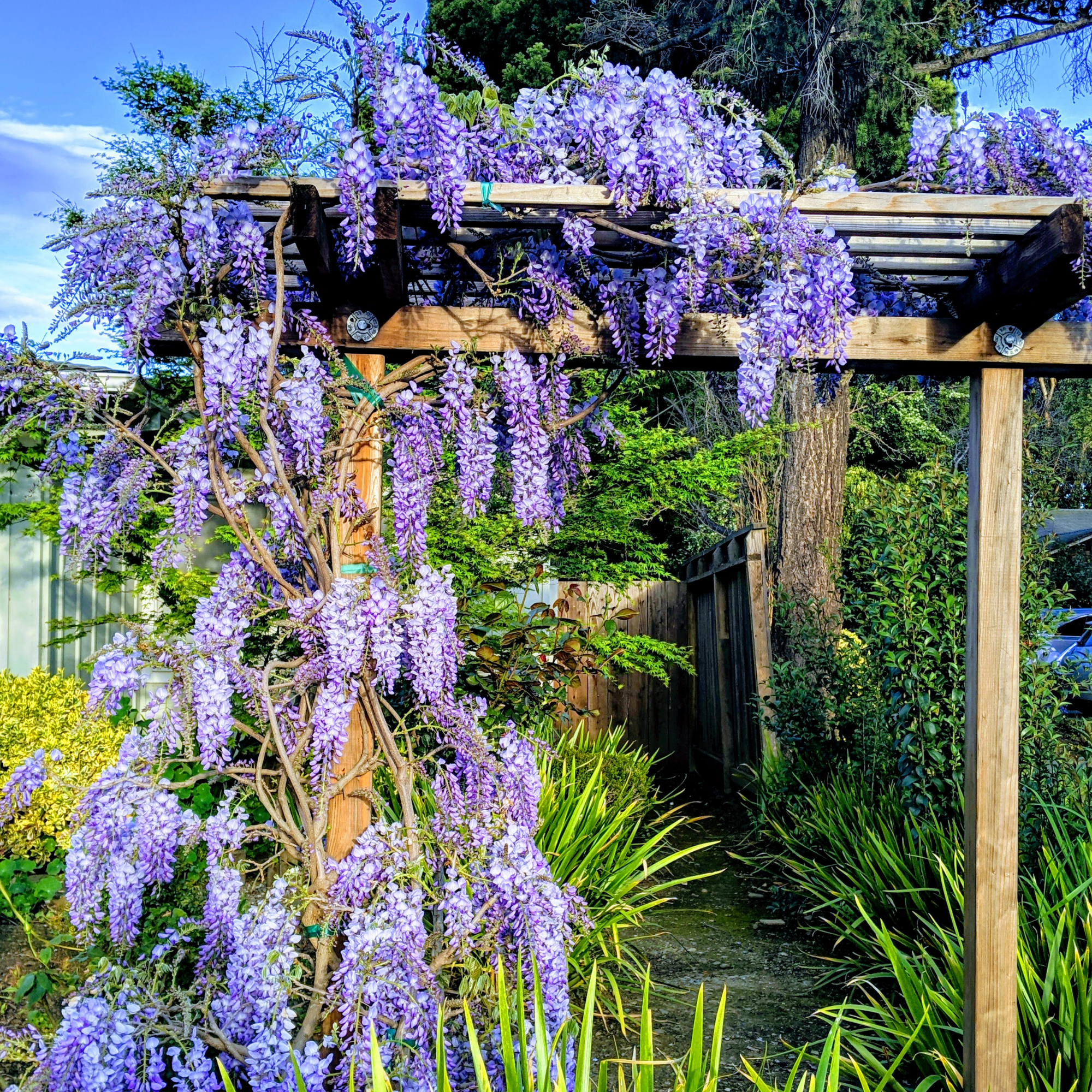How to overseed a lawn for fuller, greener, and healthier grass this spring
Your one-way ticket to a lush and vibrant lawn


Knowing how to overseed a lawn is incredibly important to revitalising and maintaining the overall health, appearance, and resilience of your lawn. It helps to fill in those pesky empty patches and bring your lawn bang up to standard – something a lot of us are looking to do ahead of the seasons changing.
You guessed it. The time is nigh to put your many lawn ideas back into motion as we begin to welcome the inklings of springtime sun. Following the very cold and rainy season we've had, it wouldn't come as any surprise if you're currently having to take on the task of reviving your lawn after winter. And, if you don't already have overseeing a lawn on your to-do list, take the experts' word for it when they say it's one of their top lawn care tips.
So, if you want to enjoy a fairly low-maintenance lawn ahead of spring and summer, overseeding a lawn now is your guarantee for a thick and healthy lawn.

How to overseed a lawn
Before we get into the 'how', you might be wondering about the 'what' and 'why' regarding overseeding a lawn in the first place.
'Overseeding is, quite simply, the act of spreading lawn seed to help thicken lawns and encourage healthier growth,' begins Peter Chaloner, managing director of Cobra Garden Machinery. 'It can encourage a thicker, more vibrant lawn as it fills in any bare or damaged patches of grass, helping to improve its overall appearance while reducing the amount of weeds and moss.'
Overseeding your lawn is one of the best ways to prepare it for all your spring and summer antics, especially considering that the best time to sow grass seed is quickly approaching. So, how do you do it?
1. Prepare the lawn
As with anything, preparation is key. 'Start by removing any debris such as fallen leaves using a powerful leaf blower or vacuum,' advises Peter. Then, make sure to give your lawn a cut.
Although you might have cut your lawn for the final time before winter, consider this a whole new job to undergo ahead of spring. 'For long grasses, you will want to scalp it down; otherwise, a regular cut and rake will do fine,' assures Sean Lade, gardening expert and director of Easy Garden Irrigation. Next, you aerate the lawn.
'A garden fork will be fine for aerating small lawns, but for larger areas, you will want to use an aerator tool to make the job quicker and get the best results,' explains Sean. This is because aerating the lawn creates pockets for the grass seeds to drop into. When doing this, make sure the holes are no deeper than 3 inches.
For extra credit, consider scarifying your lawn, too. Sean recommends using a hard wire rake to do this or rent an electric scarifier if you've got a larger garden. 'The objective is to break up the soil as it needs to go deep enough to create lines in the soil.'

2. Select the right seeds
Now that you've prepared your lawn, it's time to look at seed options.
Fantastic Gardeners' lawn care expert, Ionel Giuran recommends opting for high-quality grass seeds that are well-suited to the climate in your area, soil type, and sunlight conditions. 'I'd advise considering using a seed blend or mixture that includes a variety of grass species or cultivars for improved resilience and aesthetic appeal.'
'The amount of seeds needed will depend on the current state of your lawn and its grass thickness, so it is essential to consider this,' adds Sean.

3. Spread the seeds
After selecting the best seeds for your lawn type, you're now ready to seed.
'I suggest using a seed spreader to get the best results,' says Sean. Alternatively, you can also opt for a broadcast spreader. For smaller areas, however, you can seed by hand but ensure to evenly distribute the seeds as much as possible.
Russell Birchell, founder of Hedging UK even suggests dividing the lawn into smaller sections so you are giving each part your full attention when seeding.
'After spreading the seed, we must ensure it has good contact with the lawn, so I find using a semi-firm brush over the area does a good job,' adds Sean. This will also protect them from birds.

4. Fertilise and water
As with anything in the garden, maintenance is the next most important thing to keep on top of.
'Apply a starter fertiliser specifically formulated for new seedlings to provide essential nutrients for germination and early growth,' advises Ionel. 'Water the newly seeded areas lightly but frequently to keep the soil consistently damp and provide the best conditions for seed germination.'
But of course, how often you water will depend entirely on the weather and the amount of rainfall. Therefore, it's important to alter this to avoid overwatering (one of the worst garden watering mistakes you can fall foul of).
'If you haven't considered this already, an automatic watering system is going to be much more efficient at watering regularly, saving you both time and reducing water consumption. I suggest watering first thing in the morning,' urges Sean.

FAQs
When is the best time to overseed a lawn?
'The best time to overseed will depend on the type of grass you've chosen and the climate in the area you live in,' explains Fantastic Gardeners' lawn care expert, Ionel Giuran.
'In general, the ideal time for overseeding is considered to be early autumn for overseeding cool-season grasses, while spring is more suitable for warm-season grasses. Besides that, aim to overseed when the weather is mild and there's a good amount of humidity for seed germination.'
That being said, the best time to overseed a lawn in the UK will typically be spring or early autumn. The aim is for the weather to not be too hot nor too cold with a chance of rainfall, as the grass seeds need to stay moist to grow.
Now you know how to overseed a lawn, you're well on your way to a lush and vibrant lawn ahead of spring and summer.
Get the Ideal Home Newsletter
Sign up to our newsletter for style and decor inspiration, house makeovers, project advice and more.

Jullia was Ideal Home’s Junior Writer from 2022-2024 and the Ideal Home Certified Expert in Training on Vacuums having spent over 60 hours testing different models. She’s always loved all things homes and interiors, graduating with a bachelor’s degree in Architectural Studies from the University of Nottingham where her love for writing blossomed following her internship at ArchDaily. Now focused on home tech and cleaning, Jullia works on writing features and explainers to help people make the most of their home appliance investments, putting the newest launches through their paces. When she isn’t writing, she loves exploring the city, coffee shop hopping, and losing hours to a cosy game or book.
-
 Dahlia gall could be wreaking havoc on your garden plants – here's how to spot it, and what to do if your plants are infected
Dahlia gall could be wreaking havoc on your garden plants – here's how to spot it, and what to do if your plants are infectedNip it in the bud before it affects the rest of your garden
By Sophie King
-
 This is the best place to plant wisteria if you want beautiful romantic blooms, according to garden experts
This is the best place to plant wisteria if you want beautiful romantic blooms, according to garden expertsThis beautiful flower is on everyone's garden wishlist, and this is exactly where to plant it for best results
By Kezia Reynolds
-
 Zoe Ball's colourful kitchen island shows how easy it is to create a characterful cooking space - here's how she did it
Zoe Ball's colourful kitchen island shows how easy it is to create a characterful cooking space - here's how she did itBeing brave with colour will reap huge rewards
By Holly Cockburn